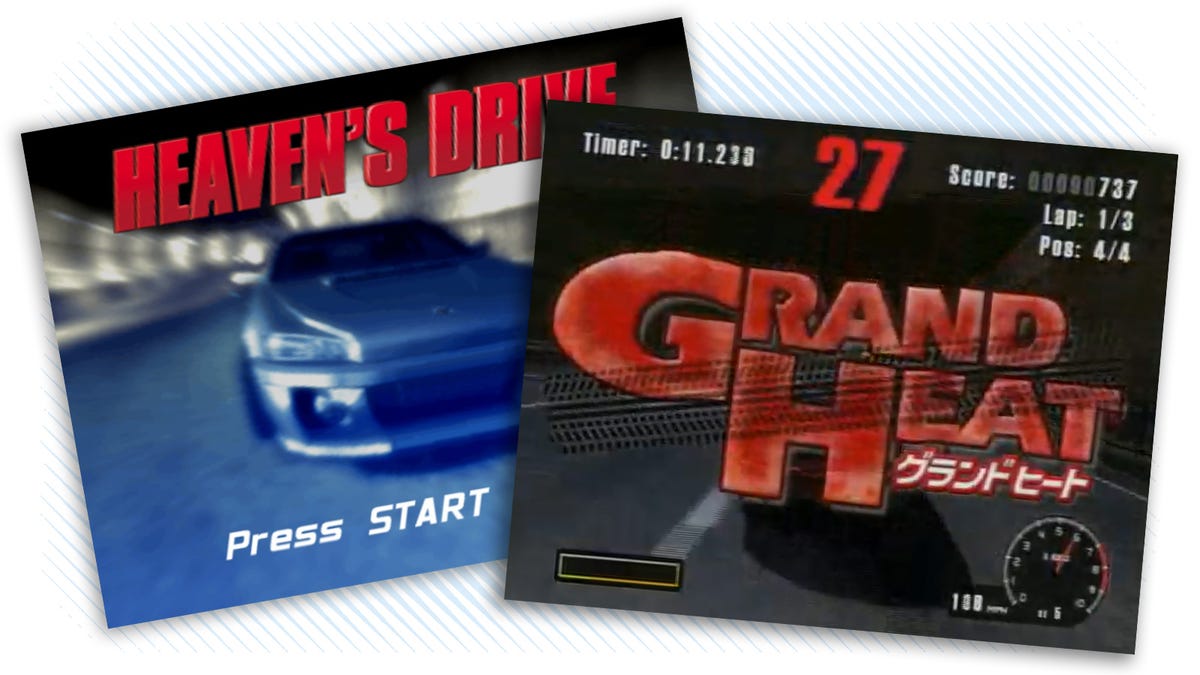The Original Burnout Almost Went By Some Wild Names In Japan

Illustration: Comby Laurent, wadelyjp, Jalopnik
Everyone knows about Burnout, Criterion Games’ beloved, long-dormant collision-centered arcade racing franchise that EA has inexplicably left to gather dust since 2009. The series hit critical mass with Burnout 3: Takedown and, many feel, reached near-perfection with the open-world Burnout Paradise several years later. They’re excellent games; the sort of high-adrenaline racers you’d recommend for newcomers to gaming or seasoned pros alike.
But of course, the series wasn’t exactly firing on all cylinders out of the gate. The original Burnout, launched in 2001, illustrates humble beginnings, especially compared to what would follow in the years to come. It also very nearly released with some pretty strange titles in Japan, as we’ve been reminded this week.
Lots of games undergo name changes when localized from one region to another. Here at Jalopnik we’ve discussed some of the racing genre’s worst offenders in the past — for example, how TOCA World Touring Cars became Jarrett & Labonte Stock Car Racing. The case with Burnout is similar, though maybe not as egregious because it wasn’t as blatantly deceitful, and it never ultimately happened. Burnout was supposed to be released in Japan as Grand Heat in 2002 via Sega — not Acclaim, who was responsible for Burnout’s distribution in the rest of the world.
Grand Heat never came out, and nobody knows exactly why. The Burnout series didn’t debut in Japan until the second game, which had the exact same title as it did everywhere else — Burnout 2: Point of Impact — even though Japanese gamers would’ve never seen its predecessor on store shelves.
What’s more, Grand Heat wasn’t even the first potential name under consideration. Game archivist Comby Laurent — the same guy who brought us Luigi’s demonic cameo in Sega GT — has uncovered another, earlier working title for the Japanese version of Criterion’s racer: Heaven’s Drive.
There is something distinctly cursed about that name in the signature Burnout font, on the original Burnout title screen. As for what it meant, context gives us clues.
See, before Burnout was but a glimmer in Criterion’s eye, Konami started on a series of arcade-exclusive racing games titled Thrill Drive. Like Burnout, Thrill Drive required players to thread the needle in traffic to defeat their competitors. Also like Burnout, crashes in Thrill Drive put a hard stop to the racing action: the fidelity of the vehicular carnage was what made the game unique for its day.
If I had to sum it up, the main difference between the two games is tone. Thrill Drive haunts you with screams of agony upon every accident; red and black swirls and blankets the screen as your driver is launched from their vehicle amid flashes of the word “FATALITY” in Japanese. Thrill Drive is overwhelmingly, madly macabre. Burnout isn’t, but Criterion was definitely influenced by Konami’s earlier work. Perhaps Heaven’s Drive would’ve signaled to Japanese gamers what the newer game was all about, while also paying homage to its inspiration.
For whatever reason, Heaven’s Drive was replaced with Grand Heat, which Sega never released. The fact Sega would have been on tap to release Burnout in Japan, when it was published by Acclaim elsewhere, is an interesting footnote. Sega had an odd partnership with Acclaim during this time, whereby the defunct, Long Island-based publisher was responsible for distributing a few of Sega’s arcade conversions, like F355 Challenge: Passione Rossa, Crazy Taxi and 18 Wheeler: American Pro Trucker, on some platforms in the West. I’m not a particularly avid game collector, but I wish Sega had gone through with this one, just so I could have a version of Burnout on my shelf with weird box art and an even more cryptic name.



